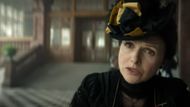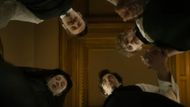House of Guinness on Netflix begins with one simple truth: The Guinness family didn't just brew beer but they built a dynasty. Netflix looks at the years and years of history to reveal not just the beer in the glass, but the family behind it.
So, who really makes up this famous tree? The story starts with Arthur Guinness, stretches across generations, and winds its way into politics, aristocracy, and even world records.
The House of Guinness family tree is filled with charismatic characters, and here's how all of their branches connect.
From Arthur Guinness to his heirs: Where the House of Guinness all began
The very first roots of the House of Guinness trace all the way back to Arthur Guinness, aka the man who kicked off the brewery business back in 1759. Born somewhere around 1724, Arthur wasn't just a smart businessman but he was the backbone for what became Ireland's most famous brewing empire.
He married Olivia Whitmore and they raised ten children, and among them, two sons stood out in the family legacy.

Arthur Guinness II was the one who inherited the brewery and kept the beer taps flowing up until the 19th century. His marriage to Anne Lee tied the Guinness name to another Dublin family, and together the two of them raised nine children.
This branch gave rise to Sir Benjamin Lee Guinness, a name that would redefine the dynasty. Meanwhile, Arthur's younger son Edward lived a quieter life but still became part of the family connections that later looped back in surprising ways.
Arthur I's vision didn't just exist but it multiplied. By the time Arthur II and Sir Benjamin were steering the business, the Guinness family was no longer just brewing beer. They were creating a legacy that would ripple through Ireland and beyond.
Sir Benjamin Lee Guinness and the siblings who defined the dynasty
When Arthur II's son Sir Benjamin Lee Guinness stepped up, the family name gained serious weight. Knighted and powerful, Benjamin's marriage to his cousin Elizabeth Guinness tied two Guinness bloodlines together and set the stage for the central figures of House of Guinness: Arthur, Benjamin, Anne, and Edward.
Arthur Edward Guinness became the 1st Baron Ardilaun. He married Lady Olivia Hedges-White, but the pair had no children, meaning his branch of the family tree ended there.

His younger brother, Benjamin Lee Guinness Il, carved a different path. A military man, he married into the aristocratic St. Lawrence family and had two sons, Algernon and Kenelm, who became racing enthusiasts.
Anne Guinness married William Plunket, the Archbishop of Dublin, which added six children to the mix. Her marriage linked the Guinness name into Ireland's religious and political circles.
Meanwhile, the youngest sibling, Edward Cecil Guinness, stood out as the real engine behind the business. Unlike Arthur, who was more social than strategic, Edward lived and breathed the brewery. His ambitions carried the Guinness name to new heights, eventually earning him the title of the 1st Earl of Iveagh.
Edward Cecil Guinness: The powerhouse of the modern House of Guinness
Edward Cecil Guinness was not just the youngest of Sir Benjamin's children. In fact, he was also the one who had the biggest dreams. He married Adelaide Maria Guinness, a distant cousin, and together they built the branch that still ties directly to the Guinness family today.

Edward and Adelaide had three sons: Rupert, Arthur Ernest, and Walter. Walter's life ended in tragedy when he was assassinated in Palestine in 1944. His son, Bryan Guinness, later married Diana Mitford before her notorious marriage to Oswald Mosley. Rupert, the eldest, became central to both the brewery and to the Guinness legacy in other ways.
It was Rupert who helped spark the idea of Guinness World Records, a quirky offshoot that would carry the family name in an entirely new direction. His descendants carried on the Guinness earldom, tying the family into both business and aristocracy well into the modern era.
From race cars to royalty: The later Guinness generations
The Guinness story didn't stop with brewing or business. Edward Cecil's grandson Benjamin Guinness soon took up the mantle of the 3rd Earl of Iveagh, as well as holding onto the Guinness chairmanship until the 1980s. Benjamin's death in 1992 saw the end of the family's control of the brewery, but his passing did not mean it was the end of their influence.

Brigid Guinness, Edward's granddaughter, married into European royalty, which tied the Guinness family and their bloodline to Prince Frederick of Prussia. Meanwhile, others, Algernon and Kenelm Guinness, made names for themselves outside the family business with wheels of race cars.
The most recent titleholder is Arthur Edward Rory Guinness, who is the 4th Earl of Iveagh, proving that the Guinness name still has that aristocratic charm today like it did all of those years ago. Even though the family no longer runs the brewery, their impact on Irish history and culture is impossible to ignore and look past. The House of Guinness has made its way to the top, from brewing vats to racetracks all the way to Persian royals, fusing their family branches across various industries and continents.
The House of Guinness family tree isn't just about who inherited a brewery, but more than that, it is a story of their ambition, reinvention, and connections that travelled far beyond Dublin. From Arthur I to Edward Cecil and the generations that came after, every member of the family left their own imprint on the family tree.
Some brought wealth, others came forth with a few scandals, and a few even made their way through royalty. The dynasty may no longer pour pints, but the Guinness name still matters in Irish history and culture even today. The House of Guinness proves that when a family plants and waters their strong roots, the branches can reach almost anywhere.
Stay tuned to SoapCentral for more.
